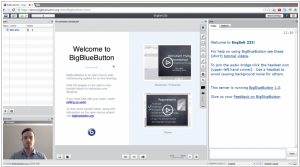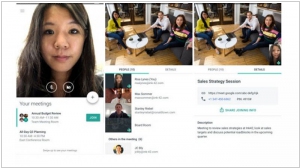BigBlueButton vs Google Meet
June 03, 2023 | Author: Adam Levine
BigBlueButton and Google Meet are both video conferencing platforms that offer features for online meetings and collaboration. However, they have some key differences in terms of their focus and functionality.
BigBlueButton is primarily designed for online learning and virtual classrooms. It offers features like video conferencing, screen sharing, chat, breakout rooms, and whiteboard tools. It also integrates with learning management systems (LMS) and supports features like polling, recording, and playback for educational purposes. BigBlueButton puts a strong emphasis on interactive learning experiences and collaboration among participants.
Google Meet, on the other hand, is a more general-purpose video conferencing platform. It offers features like video and audio calls, screen sharing, chat, and integration with other Google Workspace applications. Google Meet is designed for business meetings, team collaboration, and communication. It provides a user-friendly interface and focuses on simplicity and ease of use.
See also: Top 10 e-Learning software
BigBlueButton is primarily designed for online learning and virtual classrooms. It offers features like video conferencing, screen sharing, chat, breakout rooms, and whiteboard tools. It also integrates with learning management systems (LMS) and supports features like polling, recording, and playback for educational purposes. BigBlueButton puts a strong emphasis on interactive learning experiences and collaboration among participants.
Google Meet, on the other hand, is a more general-purpose video conferencing platform. It offers features like video and audio calls, screen sharing, chat, and integration with other Google Workspace applications. Google Meet is designed for business meetings, team collaboration, and communication. It provides a user-friendly interface and focuses on simplicity and ease of use.
See also: Top 10 e-Learning software
BigBlueButton vs Google Meet in our news:
2022. Google Meet gets automatic meeting transcriptions
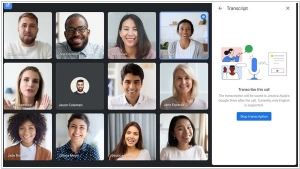
Google has introduced automatic meeting transcriptions as a built-in feature for its video conferencing service, Meet. Previously, users had to rely on third-party services like Otter to record and transcribe their calls. This new functionality is currently available for meetings conducted in English, with support for French, German, Spanish, and Portuguese slated for release in 2023. It's worth noting that Microsoft Teams already introduced a similar feature for English meetings over a year ago. Although Google possesses expertise in speech-to-text services through products like Assistant and the Android Recorder app, the addition of this feature to Meet has been a long-awaited development. Nevertheless, it is a welcome addition to enhance the meeting experience within Meet.
2022. Google Meet’s new feature lets users consume YouTube and Spotify together
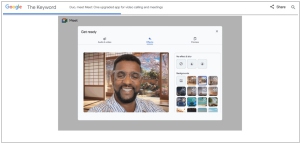
Google has recently announced the addition of live-sharing features, similar to Apple SharePlay, to Google Meet. This update aims to enhance collaboration during video calls by allowing participants to engage with content simultaneously in real-time. It's worth mentioning that Google had previously introduced live-sharing features, such as watching YouTube videos together, in Duo back in February. Now, with the integration of Duo into Meet, these features are being extended to the Meet platform. With the new live-sharing functionality, users will have the ability to watch YouTube videos collectively. These exciting features will be accessible through the Activities tab, which also includes options for Q&A sessions and polls, and can be found in the three-dot menu.
2022. Google Duo to unite with Google Meet
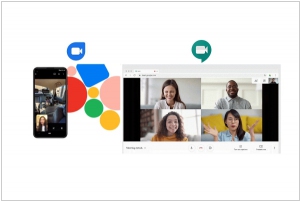
Google Duo, the consumer-focused video chat service by Google, is set to merge with Google Meet, the video chat service designed for business users. In this upcoming transition, the Duo app will incorporate all of Meet's features, including the ability to schedule calls. Subsequently, the Duo app will be rebranded as Google Meet, and the existing Meet app will seamlessly transition to the new combined Duo/Meet app. Although the process may appear complex, it is understandable considering the significant undertaking of migrating millions of users to the unified platform.
2021. Google Meet gets a refreshed UI, multipinning, autozoom and more

Google has introduced a significant update to its video-meeting service, Google Meet, incorporating a range of user interface enhancements for desktop users and introducing several new features. Noteworthy additions include multipinning, allowing users to highlight multiple feeds instead of just one, and new AI-driven video capabilities for light adjustments, autozoom, and a Data Saver feature that restricts data usage on slower mobile networks. For presenters who prefer not to view their own video feed, Meet now enables minimizing or hiding of their own feed. Additionally, users have the option to pin their own feed alongside other participants on the grid, providing the opportunity to briefly glance into their own eyes during the meeting.
2020. Google brings Meet to Gmail on mobile
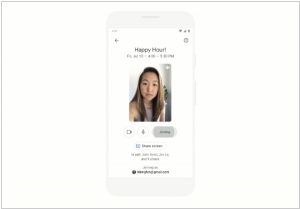
Google has recently integrated its Meet video conferencing service directly into the mobile version of Gmail. Users of Gmail on Android or iOS now have the convenience of joining Meet meetings directly from their inbox when someone sends them a Meet event link. This eliminates the need to install the dedicated Meet app solely for joining calls via Gmail. Within the Gmail app, a new Meet tab will appear at the bottom of the screen. This tab will display all upcoming Meet meetings from Google Calendar, allowing users to initiate a meeting, obtain a shareable link, or schedule a meeting within the Calendar. If you prefer not to have the Meet tab visible, you also have the option to disable it.
2020. Google Meet takes on Zoom by going completely free for everyone
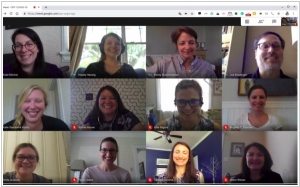
Google has made an announcement stating that its premium videoconferencing software, Google Meet, will now be offered for free to all users. Previously, Meet was exclusively accessible through Google's G Suite, a service package designed for businesses, with a starting price of $6 per month per person. However, it will now be accessible to anyone with a Google account. Google plans to gradually expand availability over the upcoming weeks, prioritizing the maintenance of a secure and reliable user experience. The free version of Meet will impose a time limit of 60 minutes on meetings, although Google will not enforce this limitation until after September 30. In comparison, the free version of Zoom imposes a 40-minute time limit on video calls. The free version of Meet also imposes other restrictions, such as a maximum of 100 participants, whereas the paid version supports up to 250 participants. Additionally, recording and saving calls are only available with the paid version.
2020. Google Meet adds Zoom-style gallery view

Google is introducing a gallery view, similar to Zoom, to its video-chat product, Google Meet. It's important to note that this service is not available for free to all Google account holders like Hangouts. Instead, it is a paid enterprise service primarily designed for businesses. Access to Google Meet starts at $6 per month, per user for the most affordable G Suite tier. The "most popular" version is priced at $12 per month, per person. Essentially, you are paying a premium for a feature that competing platforms like Zoom provide at no cost.
2020. Google is rebranding Hangouts services
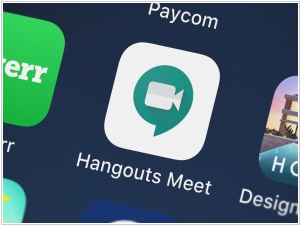
Google has made a significant change to its enterprise G Suite offering by officially rebranding Hangouts Chat as Google Chat and Hangouts Meet as Google Meet. With this move, the Hangouts brand is no longer associated with the enterprise-focused services. However, Google will retain the Hangouts name for its consumer chat app, which was originally created as a successor to Gchat and emerged from Google's discontinued social network, Google+, in 2013.
2017. Google Hangouts Meet provides new $1,999 hardware kit
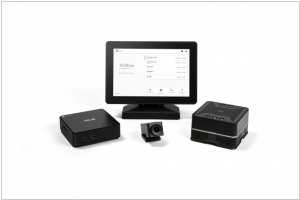
Hangouts Meet, Google's platform for conducting video and audio meetings, is receiving an array of new hardware components in its latest kit. This kit encompasses a touchscreen controller, a speaker microphone, a 4K camera, and an ASUS Chromebox, which serves as the central control device. Google has been offering various meeting kits based on Acer and ASUS Chromeboxes for some time, ranging in price from $999 to $1,999. However, with the division between Hangouts Meet and Chat (which is still somewhat perplexing), this new kit is specifically designed for Hangouts Meet and G Suite Enterprise edition customers. It also introduces the inclusion of a new touchscreen controller, although it is not the first touchscreen device tailored for Hangouts meetings. Google explains that the touchscreen is a 10-inch MIMO Vue capacitive display with HDMI capture, typically valued at around $499 when purchased separately from the kit.
2016. Google acquired work chat Pie
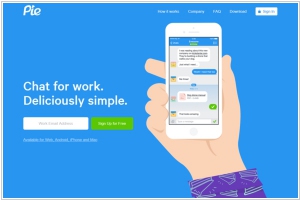
Google has acquired Pie, a team communication service similar to Slack, originating from Singapore. Pie aimed to differentiate itself in a crowded market that included well-funded rivals like Eko and ChatWork by offering a simplified experience tailored to non-technical companies. This acquisition is primarily an acqui-hire, meaning that Google is bringing onboard the talented team behind Pie. The purpose of this acquisition is to bolster a new Google team dedicated to developing products specifically for Southeast Asia, mirroring Google's successful approach in India over the past year.

